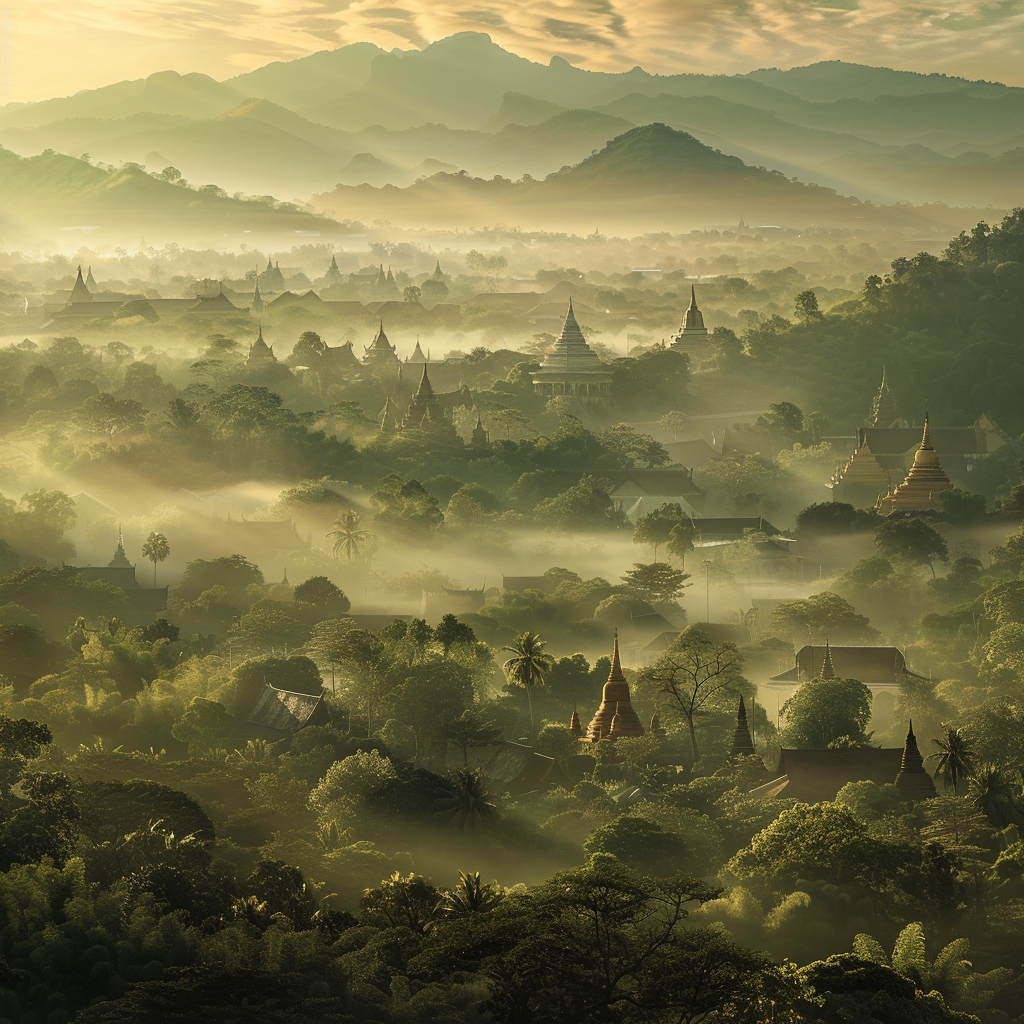On a fresh Monday morning, as the hustle and bustle of local life began its gentle hum, the Geo-Informatics and Space Technology Development Agency (Gistda) rang the alarm with reports that set health-conscious minds aflutter. Come 10 o’clock, Gistda revealed that particulate matter 2.5 micrometers and smaller, or PM2.5 if we’re getting technical, had ascended to the foreboding orange region of the air quality index. Think of it as reaching critical mass where, just like an overfull kettle, things were starting to get a little dicey for the health of our airways. With measurements flitting between 37.9 to 57.6 microgrammes per cubic meter of air over the prior 24 hours, it was time to sit up and take notice since anything over 37.5µg/m³ is a no-fly zone under government stipulations.
The epicenter of this dust-filled conundrum lay in the unsuspecting northern province of Lamphun, which, with a smidgen of notoriety, topped the dusty charts at a gnarly 57.6µg/m³. Breathing right down its neck was Lampang with 57.4µg/m³, followed by Phrae at 55.5µg/m³, all singing the same tune of dusty discord. From Chiang Rai to Phayao and Phetchabun, to Tak and Uttaradit, each region harmonized in its own uniquely hazy way, forming a melodic yet concerning chorus of PM2.5 numerals.
Across the expansive map, the North was not alone in its plight. Other provinces fell in line under this orange-hued pall, their skies tinted by the same fog of minuscule worries. Ubon Ratchathani, Khon Kaen, and Yasothon to mention a few, paraded their own dusty credentials with less than a smidge of pride. Taking in the view from the grand Central Plains all the way to the far East, the air quality flickered like an old television set, resting stubbornly on that middle-of-the-road “moderate”—neither here nor there, not quite worthy of awe or disdain.
Nonetheless, like a scene right out of a fanciful tale, farther south, where the sun shines a little bit brighter and the air breezes a little bit gentler, there lay provinces reveling in air quality so pristine you might be tempted to bottle it. Narathiwat and Yala made the list, while Samut Prakan and Songkhla joined the cool kids’ club. Yet higher in esteem were the five southern provinces donned in a crown of crystal-clear air. Chumphon to Ranong and Surat Thani straight through to Trang waved their impeccably fresh air certificates with just a hint of self-satisfaction.
Despite the challenges faced by some, the spirited essence of Thailand remains ever-vibrant. From the dust-coated north to the clear-skied south, the land continues to fascinate and surprise, inspiring introspection on how we embrace the breath of air that unites us all. For now, we watch and wait, respecting the intricate dance between nature and nurture, envisaging a harmonious environment dressed in the clarity of blue skies for all.


















I’m worried about the health effects of this air pollution. How can people live in those conditions?
It’s really concerning! Especially for kids and the elderly. They should have more regulations to prevent this mess.
Implementing stricter regulations is crucial, but enforcement is often lacking. It’s a complex issue that requires collaboration on multiple levels.
People in those areas definitely need masks and air purifiers. We should be raising funds to help!
Is this pollution due to human activities or is it a natural occurrence?
Primarily human activities. Agricultural burning is a big factor, but industrial activities also play a role.
It’s such a shame! We need sustainable alternatives to avoid these situations.
Why isn’t the government doing anything about it? It’s their responsibility to protect the people.
The government has issued warnings, but I think they need to invest more in renewable energy to combat pollution long-term.
Absolutely, Alice! The future should be focused on sustainability.
Exactly! Why are they dragging their feet on this? It’s frustrating!
Political will and budget constraints are often hurdles. Public pressure can drive change, though.
I was planning a trip to Chiang Mai. Should I cancel it?
You might want to reconsider or at least check the air quality forecasts. It’s really unpleasant there right now.
If you do go, make sure to wear a mask and avoid outdoor activities as much as possible.
I’m from the South and it’s weird thinking how different the air can be. We need to care for our environment better!
You’re fortunate but it’s a collective responsibility. Everyone needs to pitch in to help areas like the North.
We should be more worried about industrial giants. They’re the real culprits here.
Industries and agriculture both share the blame. The point is to create a balance that benefits everyone.
True, both need to be addressed. We can’t ignore one and focus on the other.
So many people talk about being reactive. How about we put more effort into being proactive with environmental policies?
Does this pollution really affect tourists as much as locals?
Tourists are affected, but locals deal with it daily, which can lead to chronic health issues.
It amazes me how resilient people are. It’s a beautiful region; let’s hope it gets the care it deserves.
Air pollution is a global issue, not just Thailand. We all need to act if we want to see real change.
Indeed, but places hitting critical levels need immediate solutions!
If people would just stop burning their fields, we wouldn’t be in this mess.
While I agree, traditional practices are hard to change overnight. Maybe incentivizing other methods could help.
It’s a systematic problem. Change at the top level is what’s needed.
Can the South lend a hand? Maybe share some best practices for managing air quality?
I think the beauty of Thailand is worth fighting for. People just need to push harder for improvements.